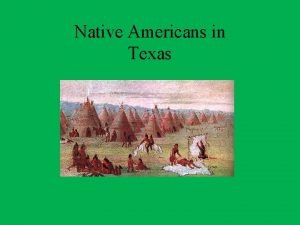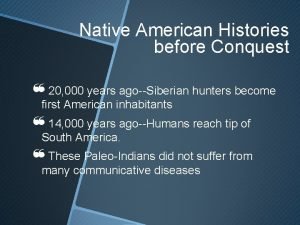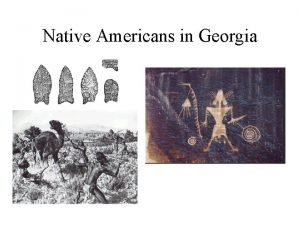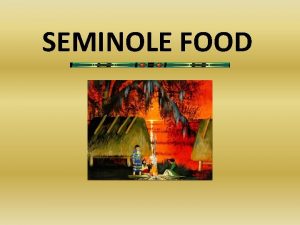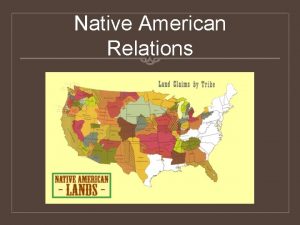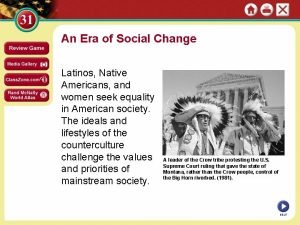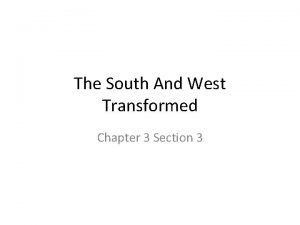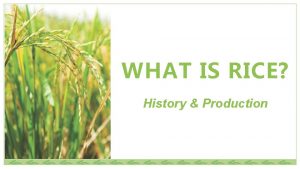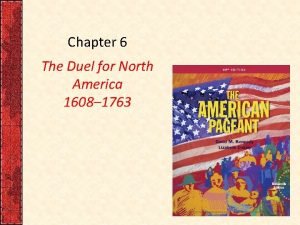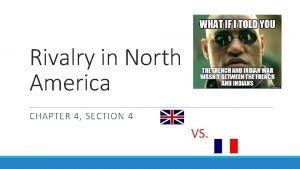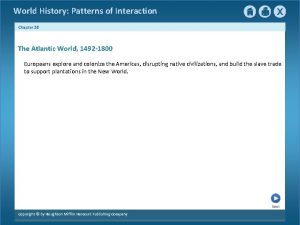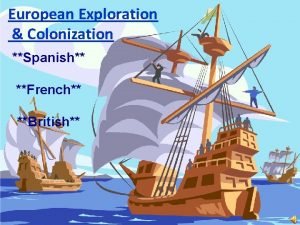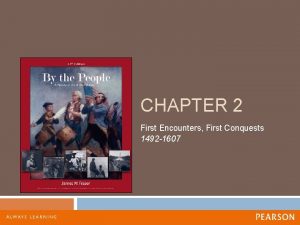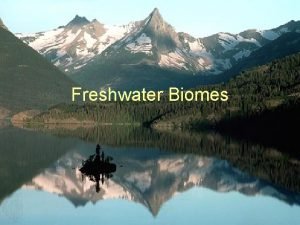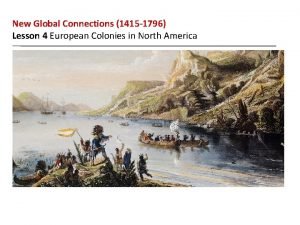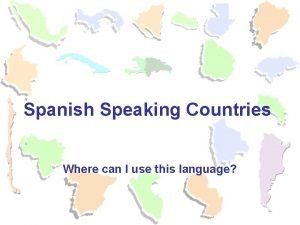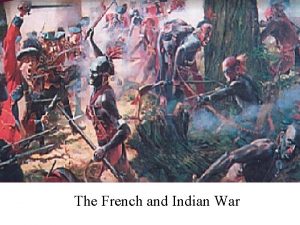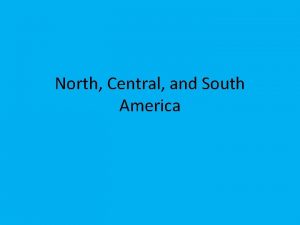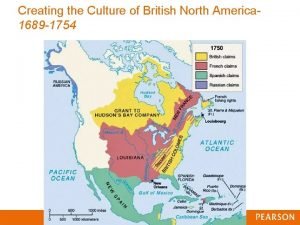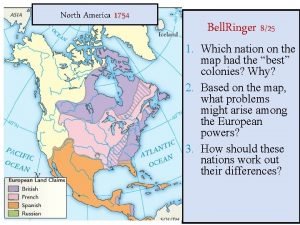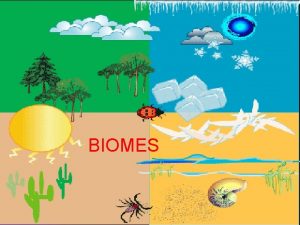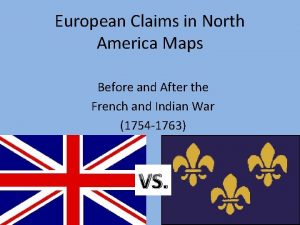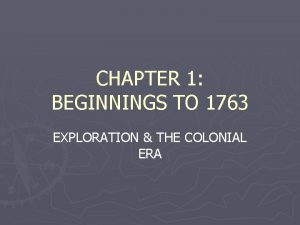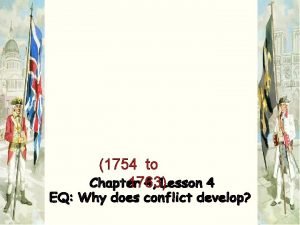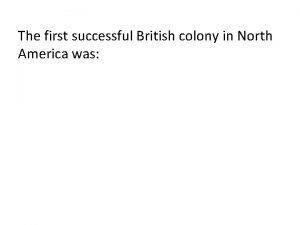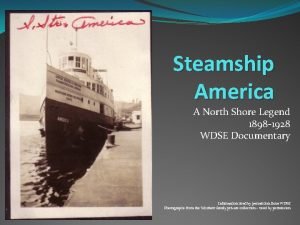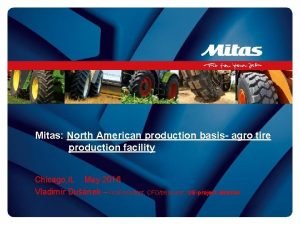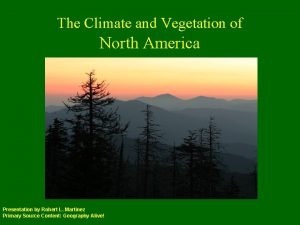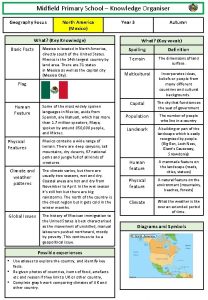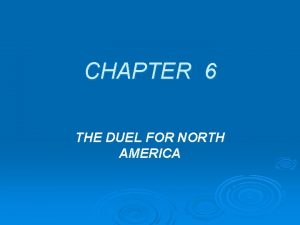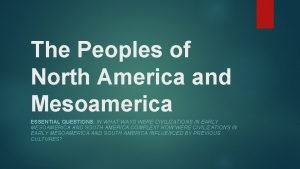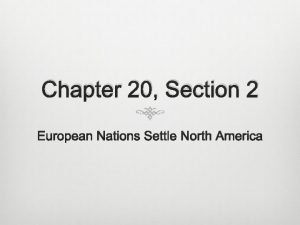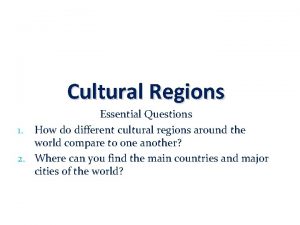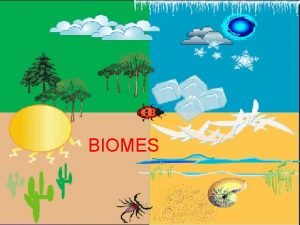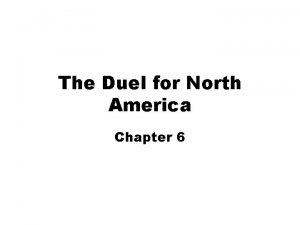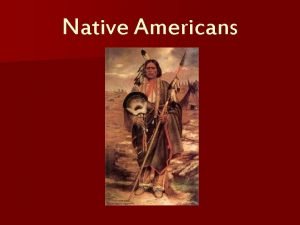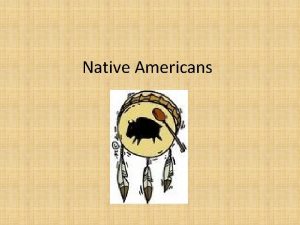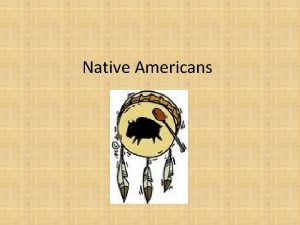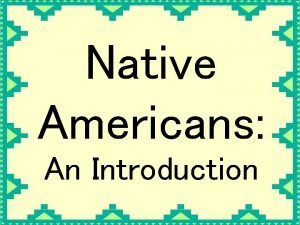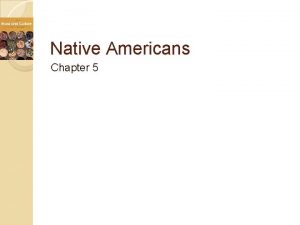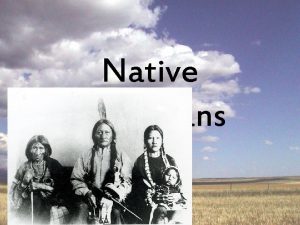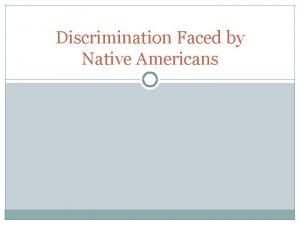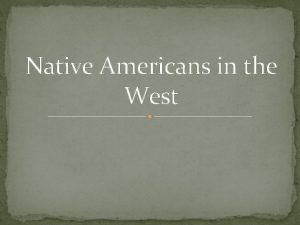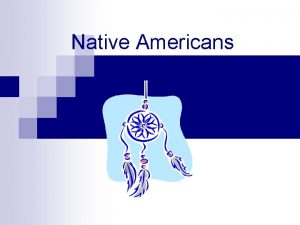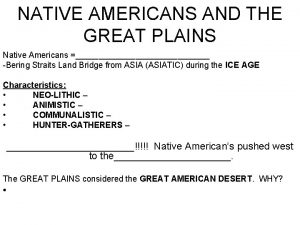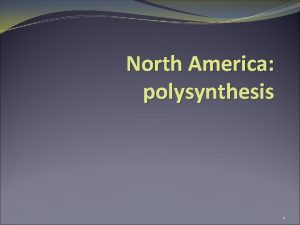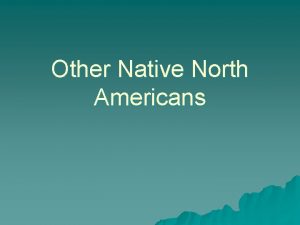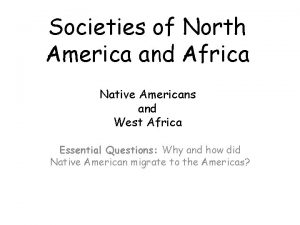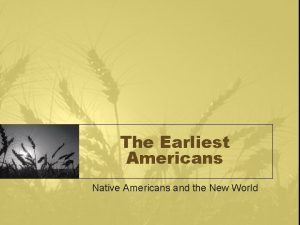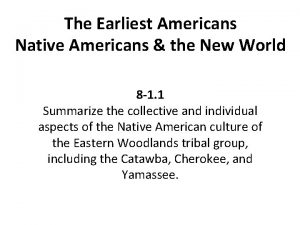Native Americans of North America What do these






























































- Slides: 62

Native Americans of North America

What do these state names have in common? • • Alabama Illinois Massachusetts Mississippi

All are names of groups of Native Americans were the first people to live in what is not the United States.

Lesson 1 The Eastern Woodlands

The Iroquois were a group of Native Americans made up of several tribes. • The tribes came together to form the Iroquois League. • A league is an organization that unites the tribes for a particular purpose. A legend was told of the tribes agreeing to bury their weapons. Over the weapons was planted “The Tree of Peace”.

The tribes of the Iroquois included the Seneca, Cayuga, Onondaga, Oneida, the Mohawk, and later, the Tuscarora.

The Iroquois League sent 50 representatives – all men – to a Great Council. The council made decisions for the League as a whole.

The Iroquois lived in the Eastern Woodlands cultural region of North America. Native American tribes within each of these regions developed similar cultures, Using the resources of their environments.

The Eastern Woodland region provided rich resources for the Iroquois. • Thick forests provided wood animals for food. • Waterways provided water and fish. • Crops such as beans, corn, and squash grew in the rich soil.

The longhouse was the Iroquois building used for shelter. It could be as long as half of a football field. It was divided into living areas for as many as 12 different families.

An Iroquois village or town could have as many as 150 longhouses.

The Iroquois also used trees to make their swift birch-bark canoes.

Like other Native Americans, the Iroquois felt a deep connection to the animals, the trees, and other resources around them. When an Iroquois hunter killed a deer, he knelt beside it and spoke to it. He thanked it for the food and clothing it would provide for his family.

The Iroquois also gave thanks for their crops at harvest time.

Wampum, polished seashells that hung on strings or woven belts, were highly valued by the Iroquois. • It could be a gift to honor a special event such as a marriage or to comfort someone after the death of a loved one. • It may symbolize an important event. • It could be used as an invitation to peaceful talks.

There about 50, 000 Iroquois today. • Many live on reservations – land set aside by the U. S. government for Native Americans. • 50 members still form the Great Council. • League members, mainly from the Mohawk tribe, have become skilled builders of city skyscrapers.

Summary • Five Iroquois tribes came together to form the Iroquois League. • Iroquois people used their surrounding resources of the Eastern Woodlands to meet their needs. • The Iroquois showed appreciation for nature in different ways.

Lesson 2 The Great Plains

Hundreds of years ago, the Great Plains cultural region of North America was a flat region covered in a sea of grass.

Few trees grew on the dry Great Plains. Millions of buffalo grazed the huge area.

Tribes of the Great Plains included the Lakota (Sioux), the Pawnee, the Osage, and later, the Cheyenne.

The Plains people lived in the central part of what is now the United States.

Most Plains people farmed and hunted. They built their villages along rivers where they could get water for their crops.

They built lodges to live in. These were large, round huts built over a deep hole. The walls of a lodge were made of earth, packed over a wood frame.

Buffalo was plentiful. These animals were a major source of meat and other useful items. • Buffalo hides were used to make clothes and blankets. • The horns were carved into bowls. • Even the stomach was used. It was hung from four poles as a cooking pot for stew.

Hunting buffalo on foot was difficult. • Hunters could not get close enough to use bows and arrows. • Sometimes they used animal disguises. • Other times they stampeded the buffalo over a cliff.

While on the hunt, people lived in tepees.

A travois was used to transport goods.

The Cheyenne changed their way of life by using the horse. • The horse made buffalo hunting much easier by allowing the hunter to ride close to the herd. • The horse made the Cheyenne more mobile. They horsedrawn travois could pull more and move faster than one pulled by a dog.

The horse become so important to the Cheyenne that wealth was measured in horses.

Today about 12, 000 Cheyenne live in the Great Plains. • Many live on a reservation in present-day Montana. • Many Cheyenne follow their traditions. • They hold a powwow, or gathering, every Fourth of July.

Summary • Some Plains Indians farmed and hunted buffalo. • With the horse, the Cheyenne became more mobile. • Today many Cheyenne live on the Great Plains and follow traditional customs.

Lesson 3 The Southwest Desert

Pueblo people live in the Southwest Desert cultural region.

The Southwestern Desert cultural region is mostly hot and arid.

Several different tribes settled in this region long ago, including the Hop and the Zuni.

The Hopi and Zuni developed a village way of life based on farming. As a result, they later became known as the Pueblo Indians. Pueblo is the Spanish word for village.

Other tribes in the region were not farmers. The Navajo raised sheep. The Apache were hunters.

The Pueblo Indians are thought to be descended from the Anasazi. • Like the Anasazi, the Pueblo developed irrigation to grow corn, beans, squash, and cotton. • Their villages looked like today’s apartment buildings, some on top of mesas.

Hopi dance ceremonies honored beings called kachinas. The Hopi believed the kachinas could bring rain and other kinds of help.

Kachina dolls were given to children to educate them about their religion.

The snake dance was another ceremony which dancers hoped would bring rain. Dancers held snakes in their teeth. When the dance was over the snakes were released. The snakes slithered away, looking like tiny streams of water.

Young unmarried women wore their hair in a style that resembled squash blossoms.

Today Hopi continue to live on their traditional lands in northeast Arizona. • The Hopi continue to live in villages. • Many Hopi still follow their ancient traditions and customs. • They have also adopted modern ways.

Summary • People of the Southwest lived in villages and used irrigation to farm the land. • Kachina dolls were used to educate Hopi children about their customs and traditions. • Today about 7, 000 Hopi live in Arizona.

Lesson 4 The Northwest Coast

Imagine a party where the floor is piled high with gifts. For this party, you don’t bring presents. Instead presents are given to you! There is much dancing and feasting.

Instead of pizza you would eat wild berries, meat, and vegetables cooked in fish oil. This party, called a potlatch, could go on for 12 days!

The word potlatch means “to give away”. The tribes of the Northwest Coast gave such parties.

The Northwest Coast cultural region included the Kwakiutl (kwah kee OO tuhl), the Tlingit (TLIN git), the Haida, and the Nootka tribes.

The Northwestern tribes had many natural resources. Thick forests contained game for hunting. Coastal waters and rivers were filled with fish and seals. They did not farm, but got all they needed from hunting and gathering.

The totem pole is a carved post with animals or other images representing a person’s ancestors.

Totem poles

Master carvers made dugout canoes out of a single cedar log.

The dugout canoes were used to hunt at sea. Seals, sea otters, and whales were hunted for meat. Furs were used for clothing and oil for lamps and heating.

A shaman was a person people came to when they were not feeling well. • They believed the shaman could cure them. • Both men and women could become shamans. Kwakiuti shaman

Kwakiuti shamans performed dancing ceremonies wearing carved masks like these.

Because food was plentiful, the Kwakiutl had time to create beautiful objects.

The coastline climate was mild. The Kwakiutl women wore clothing made of woven cedar bark or buckskin. In the colder weather they wore furs.

The forests’ cedar trees supplied the Kwakiutl with sturdy housing.

Today the forest and the sea remain important in their lives. Most of the men work in logging, construction, or fishing. • Powerboats have replaced cedar canoes. • Medical doctors and shamans serve the people. • Newer building methods have replaced the traditional cedar houses. The Kwakiutl today

Summary • Indians of the Northwest Coast met their needs from hunting and gathering. • Shamans were important people in Kwakiutl culture. • Today many Kwakiutl work in logging, construction, and fishing.
 Where did native americans come from
Where did native americans come from Portuguese sailor
Portuguese sailor Where did native americans come from
Where did native americans come from What did the seminoles eat
What did the seminoles eat How many native americans died on the trail of tears
How many native americans died on the trail of tears Latinos and native americans seek equality
Latinos and native americans seek equality What three circumstances hurt native americans
What three circumstances hurt native americans Europe asia north america south america
Europe asia north america south america Rice native to america
Rice native to america First people in the world
First people in the world Repetition in let america be america again
Repetition in let america be america again Why is called latin america
Why is called latin america Happening e performance
Happening e performance We can do a rap of the map of the us
We can do a rap of the map of the us Chapter 20 section 2 european nations settle north america
Chapter 20 section 2 european nations settle north america Chapter 6 the duel for north america
Chapter 6 the duel for north america Industrialized regions
Industrialized regions Rivalry in north america lesson 4
Rivalry in north america lesson 4 Chapter 20 section 3 world history
Chapter 20 section 3 world history Spanish settlements in north america
Spanish settlements in north america Spanish north america
Spanish north america Ottawa in north america map
Ottawa in north america map Freshwater biome climate
Freshwater biome climate North america cargo securement standard
North america cargo securement standard Chapter 7 natural environments of north america
Chapter 7 natural environments of north america Icpc north america
Icpc north america Ing north america insurance corporation
Ing north america insurance corporation European colonies in north america
European colonies in north america Capital of guatemala
Capital of guatemala French and indian war
French and indian war North central south america
North central south america Fujitsu north america
Fujitsu north america Creating the culture of british north america
Creating the culture of british north america North america 1754 map
North america 1754 map Define british north america act
Define british north america act Biomes of north america
Biomes of north america Integrated management systems training north america
Integrated management systems training north america European land claims in north america map
European land claims in north america map Spanish north america
Spanish north america Spanish north america
Spanish north america Yucatan peninsula on south america map
Yucatan peninsula on south america map Lesson 4 rivalry in north america answer key
Lesson 4 rivalry in north america answer key First successful british colony in america
First successful british colony in america North america, family histories, 1500-2000
North america, family histories, 1500-2000 Steamship america a north shore legend
Steamship america a north shore legend Novozymes north america, inc.
Novozymes north america, inc. Mitas database
Mitas database Rising tide north america
Rising tide north america Climate and vegetation of north america
Climate and vegetation of north america North america knowledge organiser
North america knowledge organiser Chapter 6 the duel for north america
Chapter 6 the duel for north america Chapter 20 section 2 european nations settle north america
Chapter 20 section 2 european nations settle north america Lake effect side
Lake effect side The peoples of north america and mesoamerica
The peoples of north america and mesoamerica Chapter 20 section 2 european nations settle north america
Chapter 20 section 2 european nations settle north america Perceptual regions of the united states
Perceptual regions of the united states North america biome map
North america biome map North america east region
North america east region Us secondary wood products market
Us secondary wood products market Utm zones north america
Utm zones north america Chapter 6 the duel for north america
Chapter 6 the duel for north america Security and prosperity partnership of north america
Security and prosperity partnership of north america Compustat research insight
Compustat research insight
